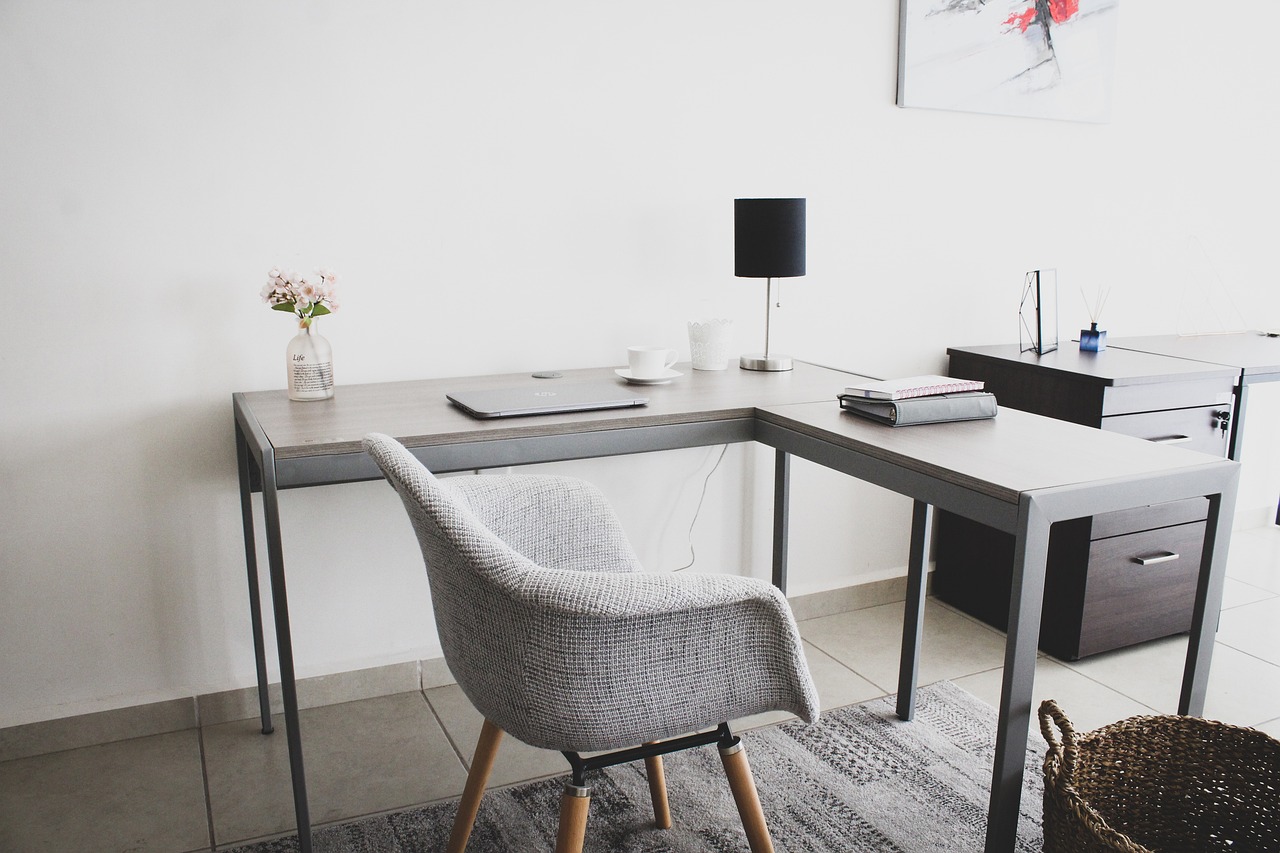
How to Create a DIY Home Office on a Budget?
Creating a practical and pleasant home office does not have to be expensive. Here’s a full guide to the key components to consider when building a DIY home office on a budget.
Essential Desk
Your desk is the hub of your home office. It’s where you’ll spend most of your time, so it should be both functional and attractive. Consider reusing an old dining table or a strong piece of furniture that you already have.
If you’re handy, you can even make one out of recycled wood, which is both environmentally responsible and cost-effective. Look for desks with a large surface area and storage drawers to assist in organizing your workspace.
Ergonomic Chair
An ergonomic chair is essential for staying comfortable throughout long hours at work. While it may be tempting to choose the cheapest option, investing in one that offers enough back support will save you from discomfort and potential health problems.
Check local thrift stores or online markets for used chairs that are in decent shape. Adding a seat cushion might provide additional comfort at no expense.
DIY storage solutions
Clutter can rapidly transform even the most elegantly furnished office into a chaotic environment. Get creative with storage by reusing stuff you already own. Old crates, baskets, and boxes can be used as both elegant and efficient storage options.
You can also make shelves out of affordable wood boards and brackets. Floating shelves above your desk allow you to make better use of vertical space while keeping your desktop free.
Desk Accessories
Use budget-friendly desk accessories to keep your workstation organized. Simple things like pen holders, paper trays, and cable organizers can be built from repurposed materials like mason jars or cardboard boxes.
DIY projects save money while also adding a personal touch to your workspace. Consider labeling your files and containers for easy access, which will assist in keeping your workspace organized.
Quality lighting
Good lighting improves productivity and mood. If your workstation lacks natural light, consider purchasing a bright desk lamp with adjustable brightness. String lights or fairy lights not only illuminate but also create a nice atmosphere in your office. Look for lamps at thrift stores or internet bargains, or try a DIY lamp project with materials you already have.
Personal touches
Personal touches can elevate your desk from a dull space to an exciting escape. Decorate the walls with inexpensive artwork, photographs, or plants that you have grown yourself. DIY wall decorations, such as framed cloth or handcrafted wall art, can add a personal touch to your office for little or nothing. The goal is to create a room that seems distinctive to you while also encouraging creativity and comfort.
Multi-functional Furniture
Multi-purpose furniture can save both space and money. Look for a desk that can also function as a console table or a chair that can provide extra seating when needed. If you’re low on room, consider folding desks or drop-leaf tables, which can be quickly stored when not in use. Making the most of your space will keep your office efficient while minimizing clutter.
High-speed Internet
A dependable internet connection is essential in today’s business environment. Evaluate your existing plan to see if it fits your job requirements; upgrading to a faster speed may be advantageous.
If you can’t afford a more expensive package, emphasize internet efficiency by limiting streaming on the same connection during business hours. If you work a long distance from your network, try purchasing a Wi-Fi extender to strengthen your connection.
Plants: Bringing Life into Your Office
Plants at your office improve the looks, air quality, and mood. Look for low-maintenance indoor plants, including succulents, spider plants, and pothos. If you’re on a low budget, propagate your existing plants or ask friends for cuttings. DIY planters can be constructed from repurposed jars or cans, providing a unique touch to your decor.
Budget-Friendly Technology: Essential Gadgets & Tools
Modern work frequently necessitates the use of technological equipment, but this does not imply that you must spend a fortune. Before you buy new equipment, consider what you already have, such as your laptop, keyboard, or display.
Consider looking for refurbished electronics from reliable dealers with warranties. Free software applications can also help you be more productive; products like Google Docs, Trello, and Zoom all have free versions that may suit your needs.
Final Thoughts
With a little creativity and resourcefulness, you can create a budget-friendly DIY home office. Focus on what is genuinely important in your workspace: functionality, comfort, and personal style.
Remember, it’s not about having the most costly goods; it’s about creating an environment that boosts productivity and reflects your personality. Embrace the process and appreciate creating a productive environment that doesn’t stretch your